Archive for the ‘Hobbies’ Category
Affordable Hobbies: An Introduction to Geocaching
Written by Sam on August 11, 2009 – 8:30 am -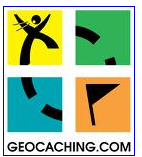 Given the tight economy it’s more important than ever to keep control over your finances. In our family, we’ve had to cut back on entertainment expenses. Now instead of paying a babysitter, we trade off babysitting with a neighbor. We’ve stopped eating out very much, and try to eat at home. It’s been a while since we’ve been to the movie theater and usually opt to rent a $1 Red Box movie instead.
Given the tight economy it’s more important than ever to keep control over your finances. In our family, we’ve had to cut back on entertainment expenses. Now instead of paying a babysitter, we trade off babysitting with a neighbor. We’ve stopped eating out very much, and try to eat at home. It’s been a while since we’ve been to the movie theater and usually opt to rent a $1 Red Box movie instead.
Cutting back has also affected how we spend money on our hobbies. Ok, I’ll be truthful; it’s cut back on how much I spend on hobbies. For example, I used to fly remote-control airplanes which is not a cheap hobby. With each outing I ended up spending $20-40 on parts after the plane crashed. To get started alone can run from $150 to upwards of $1,000. Needless to say I haven’t flown lately.
Instead, I’ve found myself spending time on hobbies that are much more affordable. One such hobby is Geocaching.
What is Geocaching?
Pronounced jee-oh-kashing, Geocaching is like a modern-day treasure hunt. Someone hides a container, known as a “cache” (pronounced “cash”), anywhere in the world and then records the location using a GPS (Global Positioning Satellite) unit. He then logs in to the website Geocaching.com and uploads the coordinates. He can add a description of the cache and location or even add a theme or a quiz to the cache to make it more interesting.
Here’s an example of what a typical cache might look like on geocaching.com:
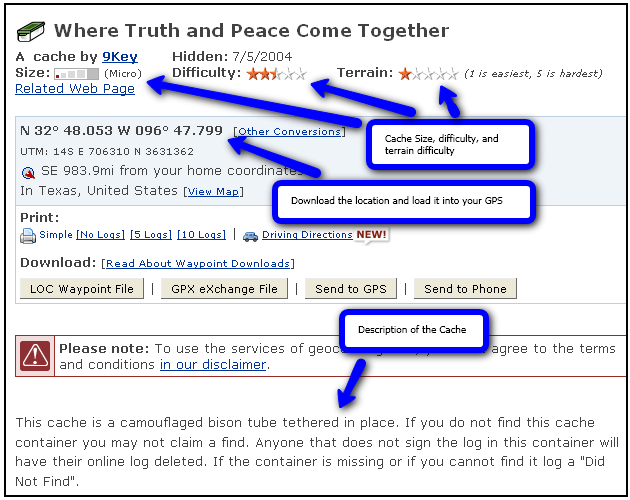
Once the cache is placed and the coordinates are uploaded, anyone can go to the geocaching.com website and search for caches they can find in their geographic area.
Below is a screenshot of caches found in the downtown Dallas TX area:
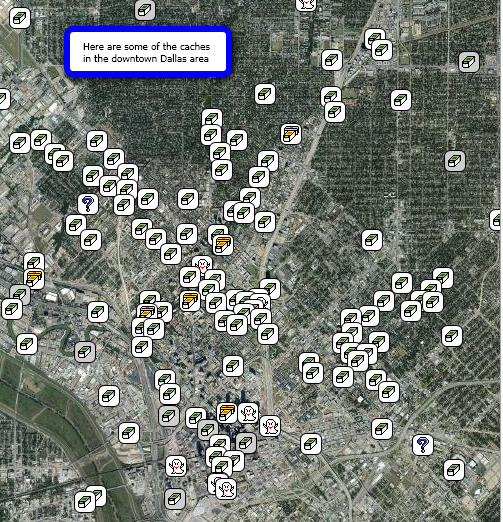
Once you identify the caches you want to find, you can load the coordinates and description of the cache into your GPS unit or gps-enabled phone and set off on an adventure to find the cache.
The image below shows the results of a search for caches in the Dallas Texas area:
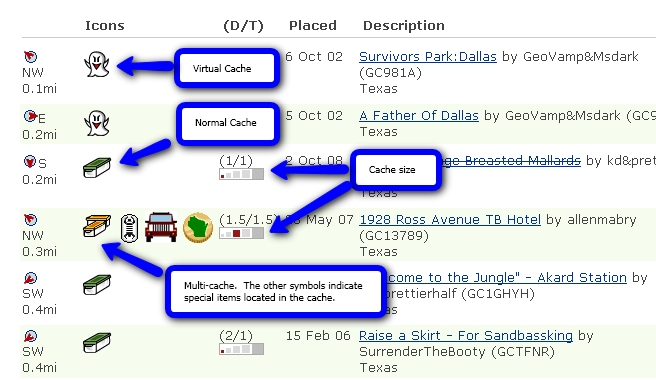
Once you find the cache you write your name in a log book located in the cache itself. If the cache container is large enough, there are typically a few trinkets placed inside as well. Geocaching etiquette dictates that you can take something from the cache as long as you leave something. It’s great for kids because it’s literally a modern-day treasure hunt. You never know what you’re going to find. When you get home after finding the cache you can then login to geocaching.com and record your find, thereby keeping track of your exploits. I personally have logged over 50 entries and I’m a novice. The more active participants have logged hundreds of finds.
Where can you participate in geocaching?
Although geocaching is still relatively obscure, I’ve been amazed at how many caches there are. Go ahead and test it yourself right now by entering your zip code at Geocaching.com and see how many results appear. Once the results appear, click on the “map it” link in the upper right hand side of the screen to see a map view of the caches. I’d bet that there are several caches within a couple miles of your home. In fact, there are possibly tens or hundreds within your city boundaries.
While populated areas often have hundreds of caches, it’s also common to find them in the wilderness. In fact, this is where more of the large-sized caches are found. Many people use geocaching as an excuse to exercise and get out in nature.
What types of caches are there? What are they like?
The cache containers range from extremely small (the size of a thimble or even smaller) to very large (the largest I’ve seen was an average-sized cooler). It’s common to see containers in the form of Altoids tins, small medicine bottles, ammo boxes, and Tupperware containers. Really small caches are known as “micro-caches” and can be located in even the most crowded urban areas without being noticed.
The image below-left shows an ammo box cache. Below right shows a tupperware cache:
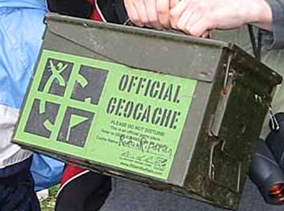
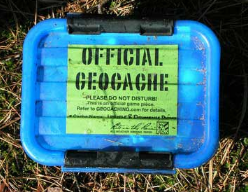
There are also caches known as “virtual” caches where there’s no physical container. Instead you have to locate a landmark of some sort. It’s common for virtual caches to lead you to a historical marker or location.
My favorite caches are “multi-caches” which consist of a series of caches that each give you a clue leading to the final cache. It’s like trying to solve a mystery or puzzle and can take several outings.
Who typically participates in geocaching?
There’s a pretty broad range of people who geocache including scouting groups, retirees who find it a good form of exercise, and families. I had a business colleague who would take his GPS unit on business trips and use geocaching as a way to familiarize himself with the area and its history. During one business meeting, the client was impressed with his knowledge of the area.
How much does it cost to get started?
The great thing is that you can get started geocaching for relatively cheap if not free. Many new smart phones have GPS functionality built in along with programs to map your position. In this case, no purchase is necessary. Otherwise, you’ll have to purchase a GPS unit. GPS units range in cost from around $50 to several hundred dollars. Last week I saw a very good GPS unit with mapping capabilities on sale for $100. While even the cheapest units will work, I recommend getting a unit with mapping capabilities. All but some of the cheapest units have maps built in.

Once you have a GPS-enabled unit, you can go to geocaching.com and start searching for caches and logging your finds for free. Geocaching.com offers a subscription service for $30 a year or $10 a quarter that allows some advanced features such downloading multiple caches at once and sending automatic emails containing new caches in your area. I currently subscribe to the service and find it very useful.
There is also software you can download to some smart phones that integrates with geocaching.com to instantly show nearby caches and with the built-in GPS functionality to show you the way. I used a trial version of the software on my Blackberry and found it very useful for impromptu caches when I felt the itch or had some spare time while traveling. On my particular phone I didn’t find the GPS to be quite as accurate as my stand alone unit, but the convenience made up for weaker accuracy. For some caches, I also found myself getting a little dirty and didn’t want to expose my phone to the elements. In such cases a stand-alone GPS unit may be better since they’re rugged and typically water-resistant. I recently checked out the geocaching website and saw that they have a new iPhone app. I must admit I was drooling over the satellite map integration and large interface. It looks like a very worthy iPhone application.
Making memories
One of the best things about Geocaching is building memories with others. I have vivid memories of the adventures I’ve been on while Geocaching with others. I’ve been with my son, friends, in-laws, and cousins. One particularly tricky multi-cache adventure took me and my brother-in-law from one side of Las Vegas to another. We probably covered 150 miles in one night. By the time we got to the last cache it was dark and we were in the middle of the desert trying to find the cache by flashlight. After about a 40 minute search, we finally found it. Good times.
If you’ve tried Geocaching, leave a comment and tell us a story from your own adventures.
Posted in Entertainment, Hobbies, Saving | 3 Comments »


 Subscribe via email
Subscribe via email  Become a fan
Become a fan Subscribe via RSS
Subscribe via RSS Follow me
Follow me